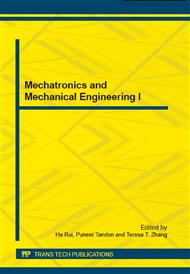p.210
p.215
p.221
p.226
p.231
p.236
p.243
p.250
p.254
Flame Stability of Gaseous Fuel Combustion inside Meso-Scale Combustor with Double Wire Mesh
Abstract:
Flame stability of gaseous fuel inside meso-scale combustor with double wire mesh was investigated experimentally. Combustor was made from quartz glass tube with an inner diameter of 3,5 mm and an outer diameter of 5 mm. Two pieces of wire meshes were made from stainless steel inserted at 10 and 13 mm from the end of combustor. Propane was used as fuel in this research. Flame was stabilized in the region between two wire meshes. The flame has a blue luminosity, indicate no soot formation condition. However, the second wire mesh and combustor wall has red luminousity at high velocity reactant, indicate that they have high temperature and emmited heat radiation. Meso-scale combustor with double wire mesh has broader flame stability area if compared to combustor with single wire mesh. Extention of this region occured toward lower equivalence ratio for lean fuel mixture, as well as toward higher equivalence ratio for rich fuel mixture. The most important extention region of flame stability area is toward higher reactant flow rate. It was caused by existing of second wire mesh which has function to prevent occurence of blow–off at relatively high reactant flow rate, as well as to increase heat recirculation to unburnt reactant as a results of higher wall temperature.
Info:
Periodical:
Pages:
231-235
Citation:
Online since:
October 2014
Authors:
Keywords:
Price:
Сopyright:
© 2014 Trans Tech Publications Ltd. All Rights Reserved
Share:
Citation:


